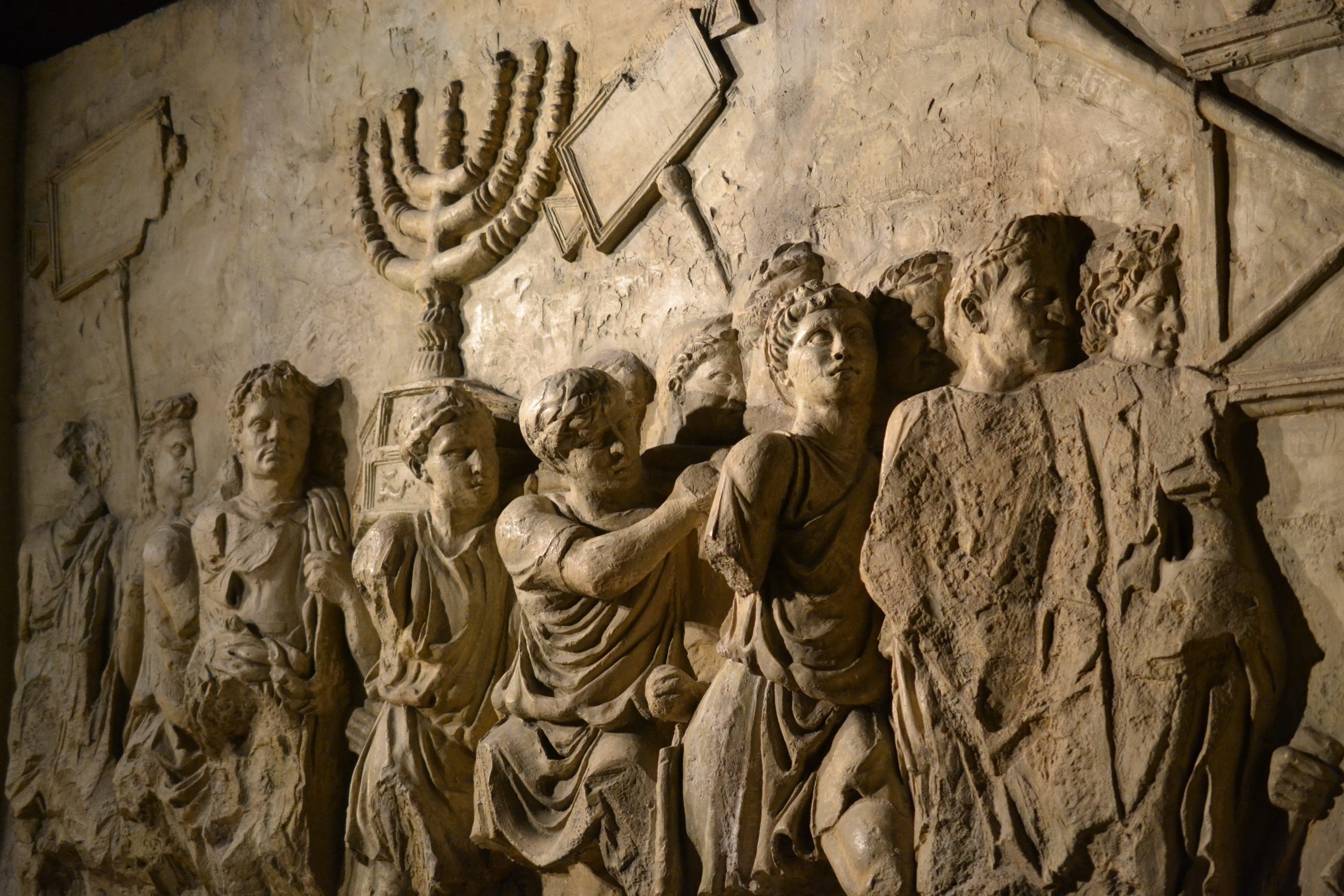Tisha b’Av is the ninth day of the month of Av, which typically falls in late July or August. This is the last day of the Three Weeks, a period of gradually increasing mourning for national tragedies that occurred during these days. Tisha b’Av is the saddest day of the Jewish year, commemorated by the most intense mourning practices of this period.
 How did Tisha b’Av start?
How did Tisha b’Av start?
The ninth of Av is the date that the spies returned from scouting out the land of Israel that God had promised the Jews. Ten of the twelve spies returned with negative reports, discouraging the Jews about their chances of conquering the land. The people cried, lamenting that they had ever left Egypt. Since, despite all the miracles they had witnessed, the people were unable to overcome their slave mentality, God ruled that that generation would die off in the wilderness and their children would be the ones to inherit the land (Numbers chapters 13-14).
As far as Tisha b’Av, the Talmud (Taanis 29a) says the date was established as a day of mourning because God metaphorically said, “Since you cried for no reason, I’ll give you something to cry about!” We see that this holiday (and it is a holiday, as we shall see) was observed even in Biblical times; Zechariah chapter 7 refers to it as the fast of the fifth month. (Nisan is the first month for purposes of counting the Jewish holidays, making Av the fifth.)
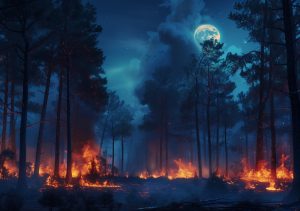 What tragedies occurred?
What tragedies occurred?
The primary tragedies we mourn on Tisha b’Av are the destructions of the two Temple, each of which was destroyed on this date – the first by the Babylonians and the second, hundreds of years later, by the Romans. Each destruction resulted in an exile, the latter of which we are still experiencing.
Other tragedies we recognize on this date include the destruction of the city of Beitar in 133 CE, effectively ending Bar Kochba’s revolt against the Roman occupiers, and the subsequent plowing of the Temple Mount by the Romans.
Many later tragedies also occurred on this date, including the expulsion of Jews from England in 1290 and from Spain in 1492. World War I also started on this date.
How do we observe Tisha b’Av?
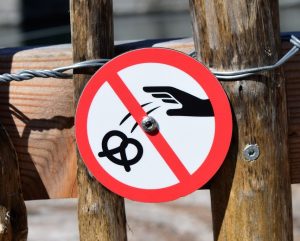 Tisha b’Av has a lot in common with Yom Kippur. For one thing, these are the only two fasts that start in the evening of the day before, which is the start of the Jewish day. (All other fasts begin at daybreak.) Additionally, the same comforts are prohibited, albeit for different reasons. These include eating and drinking, washing, anointing, wearing leather shoes, and marital relations. (On Yom Kippur we avoid these things for the purpose of atonement; on Tisha b’Av we do so as a form of mourning.)
Tisha b’Av has a lot in common with Yom Kippur. For one thing, these are the only two fasts that start in the evening of the day before, which is the start of the Jewish day. (All other fasts begin at daybreak.) Additionally, the same comforts are prohibited, albeit for different reasons. These include eating and drinking, washing, anointing, wearing leather shoes, and marital relations. (On Yom Kippur we avoid these things for the purpose of atonement; on Tisha b’Av we do so as a form of mourning.)
On Tisha b’Av, the washing of the hands that is done upon arising in the morning is only done up to the knuckles.
Other things we avoid on this day include greeting one another, learning most areas of Torah (excluding those that deal with the relevant tragedies or other mournful topics) and sitting on a regular chair before midday. (Before then, we sit on low chairs, in the fashion of mourners.) Idle conversation and lightheadedness are to be avoided. Labor is not prohibited on Tisha b’Av, but working is discouraged if one doesn’t have to. (The Talmud in Taanis 30b says that one who works on Tisha b’Av will not see benefit from those labors.)
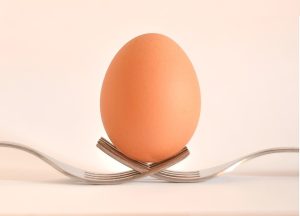
How do we prepare for the day?
In true, we prepare for Tisha b’Av for nearly a month, with the intensifying mourning practices of the Three Weeks, the Nine Days and the week of Tisha b’Av. On the afternoon preceding the fast, a special meal called the seudah hamafsekes (“the meal that divides”) is eaten. This meal consists of bread, water, and a hard-boiled egg dipped in ashes. It is eaten sitting in a low chair or on the ground, and birkas hamazon (“bentching,” grace after meals) is not recited in a group. Remember to finish the seudah hamafsekes before the fast starts!
What is the service like?
 The Tisha b’Av service is uncharacteristically mournful. Megillas Eicha (the Biblical Book of Lamentations) is read as part of the evening service; there are different customs regarding reading it again in the morning. This book was written by the prophet Jeremiah, describing the devastation of the Babylonians’ conquest of Jerusalem. This is followed by a few dirges known as kinos.
The Tisha b’Av service is uncharacteristically mournful. Megillas Eicha (the Biblical Book of Lamentations) is read as part of the evening service; there are different customs regarding reading it again in the morning. This book was written by the prophet Jeremiah, describing the devastation of the Babylonians’ conquest of Jerusalem. This is followed by a few dirges known as kinos.
In the morning service, kinos are the main event. These dirges recount the tragedies that befell the Jewish people during the destruction of Jerusalem and the Temples, as well as at other points throughout history. (Some contemporary kinos even address the horrors of the Holocaust.) There is a custom to use disposable kinos booklets. This reflects our fervent desire that we be speedily redeemed, rendering them unnecessary the following year.
Tallis and tefillin are not worn for the morning service as per usual; they are delayed until the afternoon.
Traditionally, the lights in shul are dimmed and the aron (the ark where the Torahs are kept) is draped in black.
Even though Tisha b’Av is a sad day, the prayer Tachanun, which is omitted on holidays, is not recited. This is because Eicha 1:15 refers to Tisha b’Av as a moed (a holiday). So, Tisha b’Av is a holiday, albeit a sad one. (Zechariah 8:19 says that it will eventually be a happy holiday!)
What do we do after Tisha b’Av?
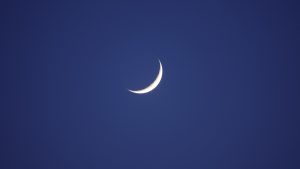 Immediately after Maariv (the evening service that follows the fast) one should recite Kiddush Levana (the blessing on the moon), which is customarily not recited during the Nine Days.
Immediately after Maariv (the evening service that follows the fast) one should recite Kiddush Levana (the blessing on the moon), which is customarily not recited during the Nine Days.
Since the Temple, which was set of fire on 9 Av, continued burning until midday on 10 Av, the restrictions of the Nine Days remain in effect through the following morning. Accordingly, the post-Tisha b’Av meal may not include meat or wine, nor may one shower for pleasure, wash clothes or listen to music right away.
The Shabbos after Tishah ’bAv is called Shabbos Nachamu (the Shabbos of Comfort) because of the haftarah that is read: the famous chapter of “Nachamu, nachamu ami” (“Comfort, comfort My people” – Isaiah chapter 40). For seven weeks, from Tisha b’Av until Rosh Hashana, special haftaros are read on Shabbos. These are known as the “seven of consolation.”
What About Shabbos?
Yes, the haftaros are read on Shabbos.
No, I mean, what if Tisha b’Av falls on Shabbos.
 Ah. Sorry. My bad. Tisha b’Av is not observed on Shabbos, so when 9 Av falls on a Saturday, the fast is held on Sunday, 10 Av.
Ah. Sorry. My bad. Tisha b’Av is not observed on Shabbos, so when 9 Av falls on a Saturday, the fast is held on Sunday, 10 Av.
When Tisha b’Av falls on Shabbos – or, for that matter, on Sunday – we eat regular Shabbos meals, including meat and wine, and wear our usual Shabbos finery. One is likewise permitted to shower in anticipation of Shabbos. The seudah hamafsekes is not eaten on Shabbos, and one must stop eating for the fast at shkiyah – sunset. The other Tisha b’Av restrictions, however, do not take effect until nightfall.
The bracha of borei m’orei ha’aish (that God created the lights of fire), normally recited as part of havdalah, is recited on Saturday night. Havdalah is recited as part of the Saturday night Shemoneh Esrei, but havdalah over a cup is not recited until after the fast on Sunday night. (One who must eat on Tisha b’Av needs to recite havdalah before doing so.) The bracha on spices is not recited.
When Tisha b’Av falls on Shabbos and the fast is observed on Sunday, the Three Weeks/Nine Days restrictions are only observed until the next morning, not until midday.
You mentioned “one who must eat.” Who gets to eat?
 As with Yom Kippur, the Tisha b’Av fast is a very stringent obligation. Accordingly, all adults who can fast should fast. However, if a doctor feels that fasting might be dangerous for a sick person, then that person should eat and/or drink in small amounts as required. If more is medically necessary, then the patient should do as his doctor advises. One who thinks he has extenuating reasons that would require him to eat should contact his rabbi for guidance.
As with Yom Kippur, the Tisha b’Av fast is a very stringent obligation. Accordingly, all adults who can fast should fast. However, if a doctor feels that fasting might be dangerous for a sick person, then that person should eat and/or drink in small amounts as required. If more is medically necessary, then the patient should do as his doctor advises. One who thinks he has extenuating reasons that would require him to eat should contact his rabbi for guidance.
May this Tisha b’Av be the last moed of mourning and next year’s be a moed of rejoicing!

